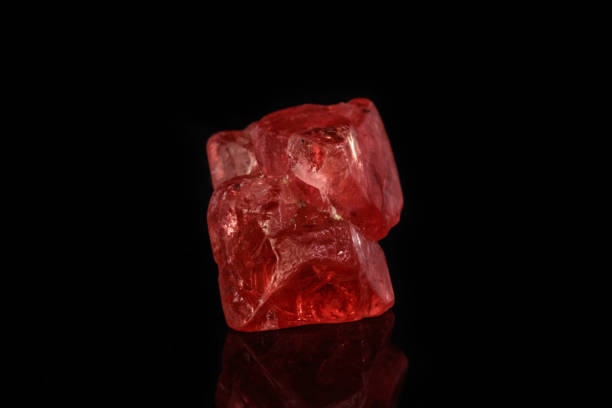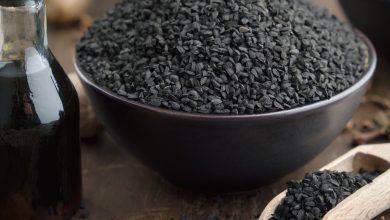The Sacred Elegance of Jade: Jade Guanyin and Jade Guanyin Pendant Meaning

Jade, revered for its beauty and spiritual significance, has been an integral part of various cultures for thousands of years. Among its many forms, the Jade Guanyin stands out as a symbol of compassion, mercy, and protection. This article delves into the profound significance of the Jade Guanyin and the specific meanings behind the Jade Guanyin pendant, exploring their cultural, spiritual, and artistic dimensions.
Jade Guanyin: A Symbol of Compassion and Mercy
Historical and Cultural Context
Guanyin, also known as Guan Yin or Kwan Yin, is the Bodhisattva of Compassion in East Asian Buddhism. The name Guanyin is short for Guanshiyin, which means “Observing the Sounds of the World.” Guanyin is venerated as the embodiment of compassion and mercy, a protector of the vulnerable, and a guide to those in distress.
The image of Guanyin has been sculpted in various materials, but jade holds a special place due to its symbolic and material value. Jade, known as the “Stone of Heaven,” is believed to possess spiritual qualities that resonate with the attributes of Guanyin. Combining the revered figure of Guanyin with the esteemed material of jade results in a powerful symbol of divine compassion and protection.
The Artistic Representation of Jade Guanyin
The depiction of Guanyin in jade is a testament to the skill and devotion of the artisans. These representations are often intricate, capturing the serene and benevolent expression of Guanyin and the flowing grace of her robes.
Iconography of Guanyin
Seated or Standing Pose: Guanyin is often depicted either seated in a meditative pose or standing on a lotus flower. The lotus symbolizes purity and enlightenment, growing untainted from the mud.
Facial Expression: The face of Guanyin is usually depicted with a serene and compassionate expression, embodying peace and benevolence.
Hands and Mudras: The hands of Guanyin are often shown in various mudras (symbolic hand gestures), each representing different aspects of her divine attributes. For example, the Abhaya mudra (gesture of fearlessness) signifies protection, while the Varada mudra (gesture of giving) represents compassion and charity.
Attributes and Symbols: Guanyin is sometimes shown holding a vase containing pure water, symbolizing the nectar of compassion. She may also be depicted with a willow branch, representing her ability to heal and alleviate suffering.
The Craftsmanship of Jade Guanyin
Creating a Jade Guanyin involves several meticulous steps, requiring a high level of craftsmanship and a deep understanding of both the material and the spiritual significance of the figure.
Selecting the Jade: The process begins with selecting high-quality jade, preferably Type A jadeite or top-grade nephrite. The quality of the jade influences the final appearance and value of the sculpture.
Design and Planning: A detailed design is created, considering the natural shape and features of the jade. The artisan must plan how to best utilize the jade’s color, translucency, and texture to enhance the representation of Guanyin.
Carving and Detailing: The jade is then meticulously carved to bring the design to life. This involves creating the intricate details of Guanyin’s face, robes, and attributes. The process demands precision and patience, as jade is a tough material that requires careful handling.
Polishing and Finishing: The final step is polishing the jade to a high gloss, enhancing its natural beauty and highlighting the fine details of the sculpture. The polished Jade Guanyin is then carefully inspected to ensure perfection.
The Symbolic Significance of Jade Guanyin
The Jade Guanyin is not merely a work of art; it is a powerful symbol imbued with deep spiritual meaning.
Compassion and Mercy: Guanyin is the embodiment of compassion and mercy. The Jade Guanyin serves as a reminder of these qualities, encouraging the beholder to cultivate compassion in their own life.
Protection and Healing: Guanyin is revered as a protector and healer. The Jade Guanyin is believed to offer protection from harm and to promote physical and spiritual healing.
Spiritual Guidance: As a Bodhisattva, Guanyin guides souls towards enlightenment. The Jade Guanyin is seen as a source of spiritual guidance, helping individuals navigate the challenges of life with wisdom and grace.
Connection to the Divine: Jade is considered a bridge between the earthly and the divine. The Jade Guanyin, therefore, serves as a tangible connection to higher spiritual realms, fostering a sense of peace and reverence.
Jade Guanyin Pendant Meaning: A Personal Talisman of Compassion and Protection
The Significance of Wearing a Jade Guanyin Pendant
Wearing a Jade Guanyin pendant meaning is a way to carry the blessings and protective qualities of Guanyin close to one’s heart. These pendants are cherished not only for their beauty but also for their profound spiritual significance.
Personal Protection: The Jade Guanyin pendant is believed to offer personal protection, safeguarding the wearer from negative energies and misfortune.
Emotional Healing: The compassionate energy of Guanyin is thought to promote emotional healing, helping the wearer find peace and solace in times of distress.
Spiritual Support: Wearing a Jade Guanyin pendant serves as a constant reminder of Guanyin’s presence and guidance, providing spiritual support and encouragement.
Symbol of Compassion: The pendant encourages the wearer to embody the qualities of compassion and mercy in their daily life, fostering harmonious relationships and positive interactions.
The Symbolic Elements of the Jade Guanyin Pendant
A Jade Guanyin pendant often incorporates various symbolic elements that enhance its spiritual significance.
The Lotus Flower: Many Jade Guanyin pendants feature a lotus flower, symbolizing purity and spiritual enlightenment. The lotus grows in muddy waters but blooms beautifully, representing the journey towards enlightenment despite life’s challenges.
The Willow Branch: The willow branch is another common element, symbolizing flexibility, healing, and the ability to bend without breaking. It represents Guanyin’s power to heal and transform suffering.
The Vase: Guanyin is sometimes depicted holding a vase containing pure water, symbolizing the nectar of compassion that cleanses and purifies.
Mudras: The hand gestures (mudras) of Guanyin on the pendant may convey specific blessings, such as protection (Abhaya mudra) or compassion (Varada mudra).
The Craftsmanship of Jade Guanyin Pendants
Creating a Jade Guanyin pendant involves a blend of artistic skill and spiritual devotion. The process mirrors that of larger Jade Guanyin sculptures but on a smaller, more intricate scale.
Material Selection: High-quality jade is chosen for the pendant, ensuring that the final piece has the desired color, translucency, and texture.
Design and Carving: The design is meticulously planned to incorporate the essential features and symbols of Guanyin. Skilled artisans carve the jade with precision, capturing the serene expression and graceful posture of Guanyin.
Detailing and Finishing: Fine details are added to the pendant, such as the facial features, robes, and symbolic elements. The pendant is then polished to a smooth, glossy finish, enhancing its visual appeal and tactile quality.
The Personal and Cultural Impact of Jade Guanyin Pendants
Jade Guanyin pendants hold personal and cultural significance, making them cherished possessions for many people.
Heirloom and Legacy: Jade Guanyin pendants are often passed down through generations as family heirlooms, preserving cultural heritage and spiritual traditions.
Gifts of Blessing: These pendants are commonly given as gifts to convey blessings and good wishes. They are especially popular for significant life events such as births, weddings, and milestone birthdays.
Daily Wear and Ritual Use: Many people wear Jade Guanyin pendants daily as a personal talisman, while others use them in spiritual practices and rituals to invoke the blessings and protection of Guanyin.
Modern Interpretations and Designs
While traditional designs remain popular, modern interpretations of Jade Guanyin pendants have emerged, appealing to a contemporary audience.
Minimalist Designs: Modern designers often create minimalist Jade Guanyin pendants that maintain the essence of Guanyin’s image while appealing to those with a preference for simple, elegant jewelry.
Mixed Materials: Some pendants incorporate other materials such as gold, silver, or diamonds to enhance the beauty and value of the jade. These combinations create striking and unique pieces that blend traditional symbolism with modern aesthetics.
Personal Customization: Customizable Jade Guanyin pendants allow wearers to choose specific symbols or design elements that hold personal significance, creating a deeply personalized talisman.
Conclusion
The exploration of Jade Guanyin and Jade Guanyin pendants reveals the profound spiritual, cultural, and artistic significance of these remarkable pieces. Jade, with its rich history and revered status as the “Stone of Heaven,” is the perfect medium for capturing the essence of Guanyin, the Bodhisattva of Compassion.
Jade Guanyin sculptures and pendants are more than just beautiful objects; they are powerful symbols of compassion, mercy, and protection. They serve as reminders of the divine qualities embodied by Guanyin and encourage wearers to cultivate these virtues in their own lives.
The craftsmanship involved in creating Jade Guanyin pieces reflects the devotion and skill of artisans who honor both the material and the spiritual significance of their work. Each piece is a testament to human creativity and the enduring allure of jade.
Whether as a cherished heirloom, a personal talisman, or a gift of blessing, Jade Guanyin pendants continue to inspire and protect those who wear them. They stand as timeless symbols of compassion, guiding individuals on their spiritual journeys and connecting them to the divine essence of Guanyin.
In a world that often seems tumultuous and uncertain, the serene presence of a Jade Guanyin pendant offers a beacon of hope, compassion, and protection. It is a tangible reminder that, despite life’s challenges, the qualities of mercy and kindness can illuminate our path and guide us towards a more harmonious and enlightened existence.









